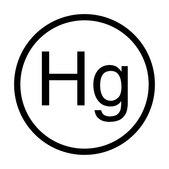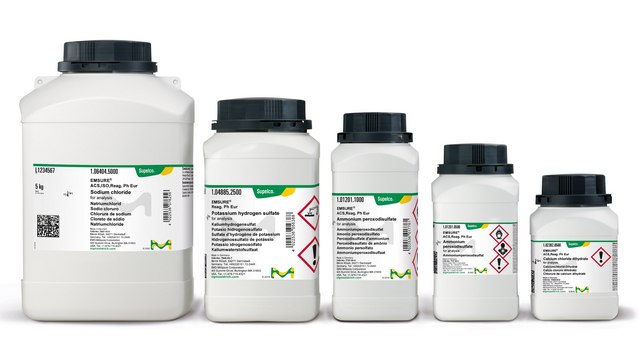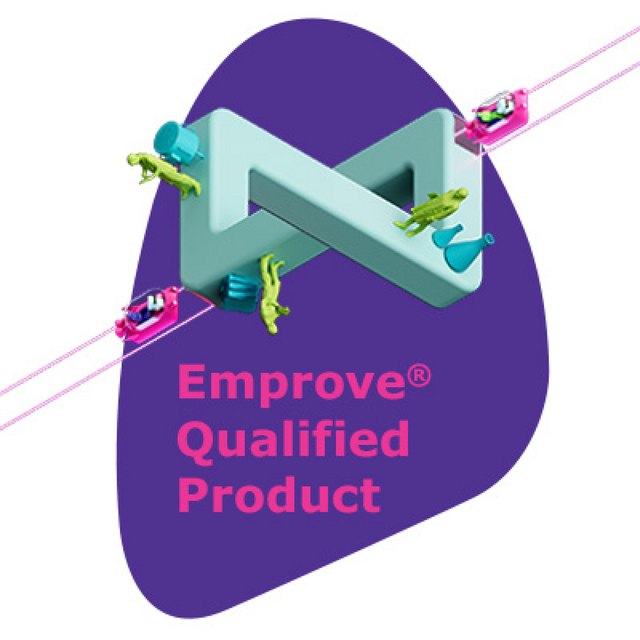1.04484
Mercury(II) thiocyanate
for analysis EMSURE® Reag. Ph Eur
Synonym(s):
Mercury(II) thiocyanate, Mercury(II) rhodanide, Mercury(II) thiocyanate
About This Item
Recommended Products
Agency
reag. Ph. Eur.
Quality Level
product line
EMSURE®
Assay
≥99.0% (complexometric)
form
solid
potency
46 mg/kg LD50, oral (Rat)
ign. residue
≤0.05% (substances not reducing by formic acid)
pH
5 (20 °C, 50 g/L in H2O, slurry)
mp
165 °C (decomposition)
transition temp
flash point 120 °C
solubility
0.7 g/L
density
3.71 g/cm3 at 20 °C
bulk density
750 kg/m3
cation traces
Fe: ≤0.002%
storage temp.
2-30°C
SMILES string
[Hg+2].[K+].[K+].[S-]C#N.[S-]C#N.[S-]C#N.[S-]C#N
InChI
1S/4CHNS.Hg.2K/c4*2-1-3;;;/h4*3H;;;/q;;;;+2;2*+1/p-4
InChI key
HWXOCCNUUYRBKP-UHFFFAOYSA-J
Application
- Spatial health risk assessments of nickel in the groundwater sources of a mining-impacted area: Mercury(II) thiocyanate may be used as a reagent in assessing heavy metal contamination, providing crucial data for environmental management and public health (Salehi et al., 2024).
Analysis Note
Fe (Iron): ≤ 0.002 %
Substances not reducing by formic acid (residue on ignition): ≤ 0.05 %
Corresponds to Reag. Ph Eur
Legal Information
Disclaimer

Signal Word
Danger
Hazard Statements
Precautionary Statements
Hazard Classifications
Acute Tox. 1 Dermal - Acute Tox. 2 Inhalation - Acute Tox. 2 Oral - Aquatic Acute 1 - Aquatic Chronic 1 - STOT RE 2
Supplementary Hazards
Storage Class Code
6.1A - Combustible, acute toxic Cat. 1 and 2 / very toxic hazardous materials
WGK
WGK 3
Flash Point(F)
248.0 °F - closed cup
Flash Point(C)
120 °C - closed cup
Regulatory Information
Certificates of Analysis (COA)
Search for Certificates of Analysis (COA) by entering the products Lot/Batch Number. Lot and Batch Numbers can be found on a product’s label following the words ‘Lot’ or ‘Batch’.
Already Own This Product?
Find documentation for the products that you have recently purchased in the Document Library.
Our team of scientists has experience in all areas of research including Life Science, Material Science, Chemical Synthesis, Chromatography, Analytical and many others.
Contact Technical Service






